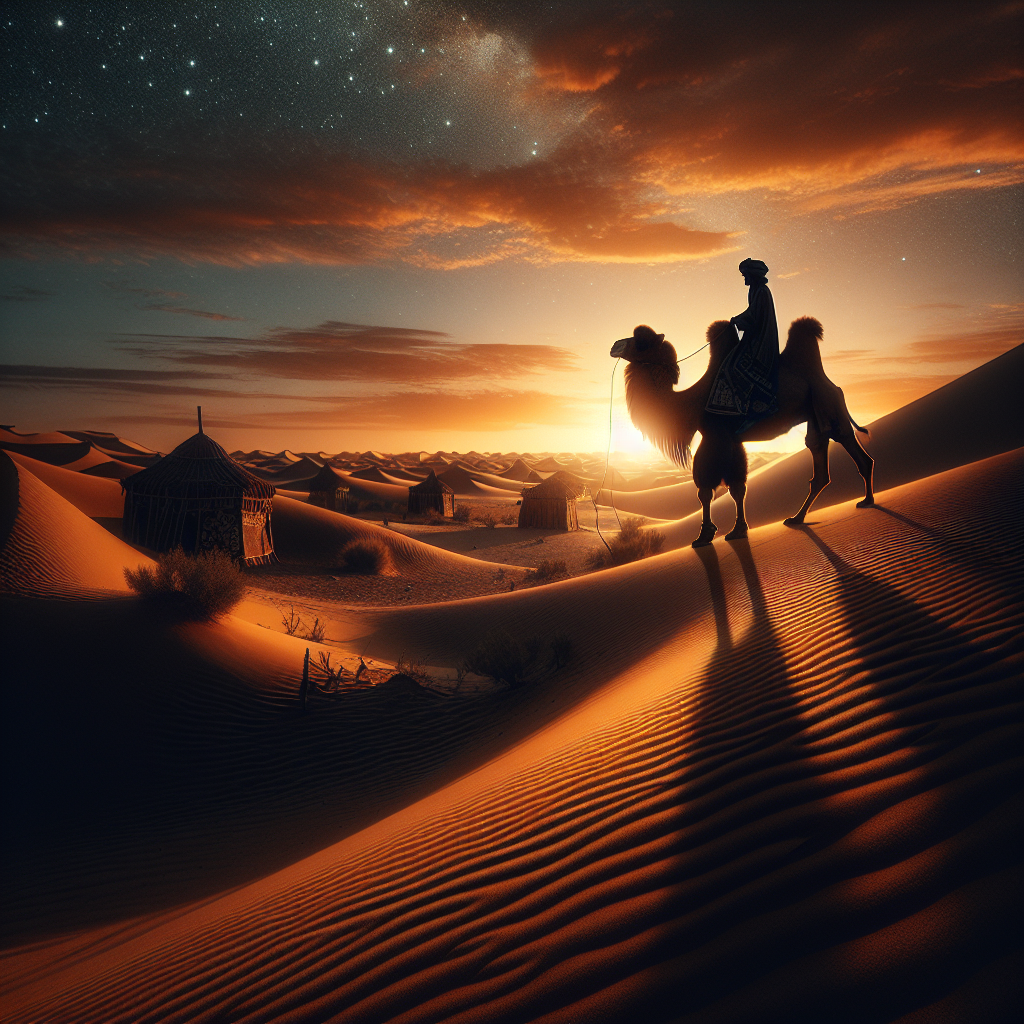The Resilient Traveler: Exploring the Enduring Legacy of Camels in Desert Cultures

The Resilient Traveler: Exploring the Enduring Legacy of Camels in Desert Cultures
In the vast, undulating sands of the world’s most arid deserts, where the sun relentlessly beats down and water is a precious commodity, one creature stands as a symbol of life, endurance, and adaptability: the camel. Often dubbed the "ships of the desert," camels have been indispensable companions to desert dwellers throughout history. Their resilience and unique adaptations have not only made survival possible in some of the harshest climates on Earth but have also shaped the cultures and economies of desert regions.
A Marvel of Adaptation
Camels are an evolutionary marvel. Native to the dry regions of the Middle East, North Africa, and parts of Asia, these single-humped (dromedary) and double-humped (Bactrian) animals have evolved a suite of features perfectly suited to enduring desert extremes. Their distinctive humps, often mistaken as water reserves, are actually fatty tissue providing energy when food is scarce. Moreover, camels can endure long periods without water, losing up to 25% of their body weight through perspiration — a feat deadly to most other mammals.
Beyond their physiological adaptations, camels have thick fur that protects them from the sun and insulates against nighttime cold, while their broad, flat feet distribute their weight evenly over sandy terrain, akin to snowshoes on powder. Their eyes, heavily lidded and with a third translucent eyelid, shield against sandstorms, and their nostrils can close to keep out blowing dust.
Cultural Significance
For centuries, camels have been more than mere beasts of burden; they are integral to the cultural tapestry of desert societies. In the Arabian Peninsula, Bedouin tribes developed a profound bond with these animals, relying on them for transportation, food, milk, and even social status. Camels enabled the establishment of trade routes across inhospitable terrain, facilitating the exchange of spices, textiles, and ideas between disparate regions, thus playing a pivotal role in the dawning of globalization.
In North African Tuareg cultures, camels are celebrated in poetry and song, symbols of wealth and status, and essential participants in traditional ceremonies. Their milk is a staple, often fermented into a yogurt-like drink, while their meat serves as a vital protein source.
Modern Relevance and Conservation
In contemporary times, the role of camels has evolved, yet they remain crucial to the livelihood of many desert communities. Beyond traditional herding, camels are woven into modern tourism and entertainment sectors, from camel racing to desert safaris, drawing millions of visitors eager for authentic cultural experiences.
Nevertheless, the rise of motorized transport and climate change pose challenges to traditional camel husbandry. Efforts are underway to preserve this heritage, including breeding programs and festivals celebrating camel culture.
Simultaneously, scientific interest in camelid physiology is growing, offering insights into human health. Their unique immune systems inspire novel medical research, including antibody developments that might lead to breakthroughs in disease treatment.
A Symbol of Sustainability
Amid global discussions on sustainability, camels offer valuable lessons. Their low-impact grazing supports biodiversity, making them an eco-friendly alternative to heavily polluting mechanized vehicles in delicate desert ecosystems. As we grapple with environmental challenges, ancient adaptations may guide innovative solutions for a sustainable future.
Conclusion
The camel, an enduring symbol of resilience and endurance, continues to navigate the shifting sands of culture, economy, and ecology. From ancient caravans to modern discoveries, the legacy of camels underscores the profound interconnectedness between humans and animals. As we explore the enduring chapters of camel history and their future potential, these remarkable creatures invite us to marvel not only at their ability to survive but also at their capacity to thrive and enrich desert cultures worldwide.